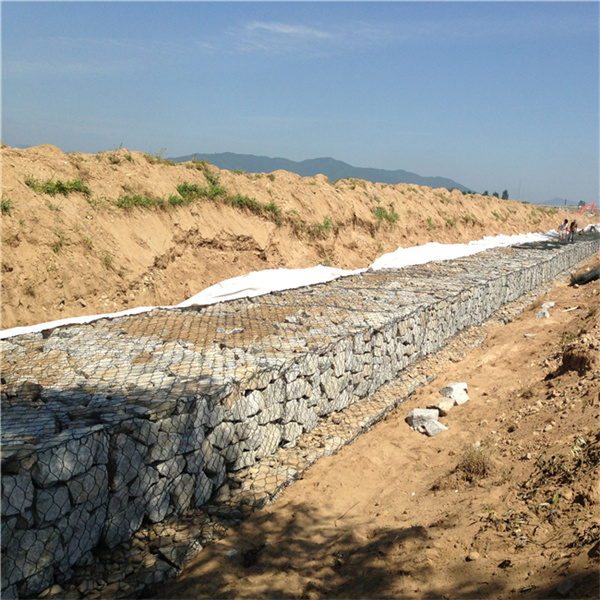Oct . 17, 2024 18:29 Back to list
purpose of gabion wall
The Purpose of Gabion Walls
Gabion walls, often seen in various landscapes and civil engineering projects, serve a multitude of purposes that highlight their versatility and effectiveness. These structures, made from wire mesh cages filled with rock, concrete, or other materials, offer both functional and aesthetic benefits in a variety of applications.
Erosion Control
One of the primary purposes of gabion walls is erosion control. In areas where soil erosion is a significant concern, particularly near rivers, streams, or steep hillsides, gabions can effectively mitigate the loss of soil. The architecture of the gabion wall allows it to absorb and redirect water flow, reducing the impact of runoff. This capability is especially beneficial in areas subject to heavy rain or flooding, where traditional erosion control methods might fail. By stabilizing the soil, gabion walls help maintain the integrity of landscapes and prevent the loss of valuable agricultural land.
Structure Support
In construction and civil engineering, gabion walls provide structural support. They are often used as retaining walls to hold back soil in applications where the ground level changes significantly. The weight of the stacked stones within the gabion also adds to its stability, preventing landslides and ensuring that infrastructure, such as roads or buildings, remains safe and functional. Their flexibility in design allows for varied applications, making them suitable for both large-scale infrastructure projects and smaller landscaping enhancements.
Aesthetic Appeal
Beyond their functional uses, gabion walls can enhance the aesthetic appeal of a landscape. The exposed rock fill can create a natural and rustic look that blends well with surroundings, whether in a garden, park, or urban setting. This makes gabions an increasingly popular choice for landscape architects and designers who are looking to create visually appealing spaces while also addressing practical engineering needs. Gabion walls can be shaped and styled in various ways, allowing for creative designs that contribute positively to the environment.
purpose of gabion wall

Environmental Benefits
Gabion walls also promote beneficial environmental practices. Unlike conventional concrete walls, gabions allow for vegetation to grow through and around them. This capacity helps restore habitats, encouraging the growth of plants that can further prevent erosion and provide food and shelter for wildlife. Additionally, using locally sourced stones for filling can reduce the carbon footprint associated with transporting materials, aligning with more sustainable construction practices.
Cost-Effective Solutions
The construction of gabion walls can be a cost-effective solution compared to traditional wall structures. The materials required are often readily available and inexpensive, especially if local stone is utilized. Moreover, the installation of gabion walls typically requires less labor and time than the construction of concrete or masonry walls, leading to reduced project costs. This financial efficiency makes gabion walls an attractive option for both public and private projects.
Adaptability to Various Conditions
Gabion walls have the advantage of being adaptable to various environmental conditions. They can be designed to fit into different terrains, whether rocky, sandy, or silty, and are resilient against natural forces such as high winds and heavy rainfall. Their design allows for drainage, preventing water accumulation and pressure buildup behind the wall. This adaptability is essential in regions prone to extreme weather, making gabion walls a reliable choice for long-term structural integrity.
Conclusion
In summary, gabion walls serve a multifaceted purpose in modern engineering and landscape design. From providing essential erosion control and structural support to offering aesthetic enhancements and environmental benefits, they are a valuable asset in mitigating the impacts of environmental challenges. The cost-effectiveness and adaptability further underscore their importance in contemporary construction practices. As we continue to navigate the complexities of urban development and landscape management, gabion walls will undoubtedly remain a key component in creating sustainable, resilient, and beautiful environments.
-
Transform Your Outdoor Space with Gabion Fences
NewsApr.01,2025
-
The Versatility of Gabion Baskets for Your Projects
NewsApr.01,2025
-
The Importance of a Protective Net Sleeve for Your Valuable Investments
NewsApr.01,2025
-
The Benefits of Gabion Walls for Your Next Project
NewsApr.01,2025
-
Gabion Baskets
NewsApr.01,2025
-
Discover The Benefits of Protective Nets
NewsApr.01,2025
-
The Essential Guide to Gabion Supplies
NewsMar.12,2025






